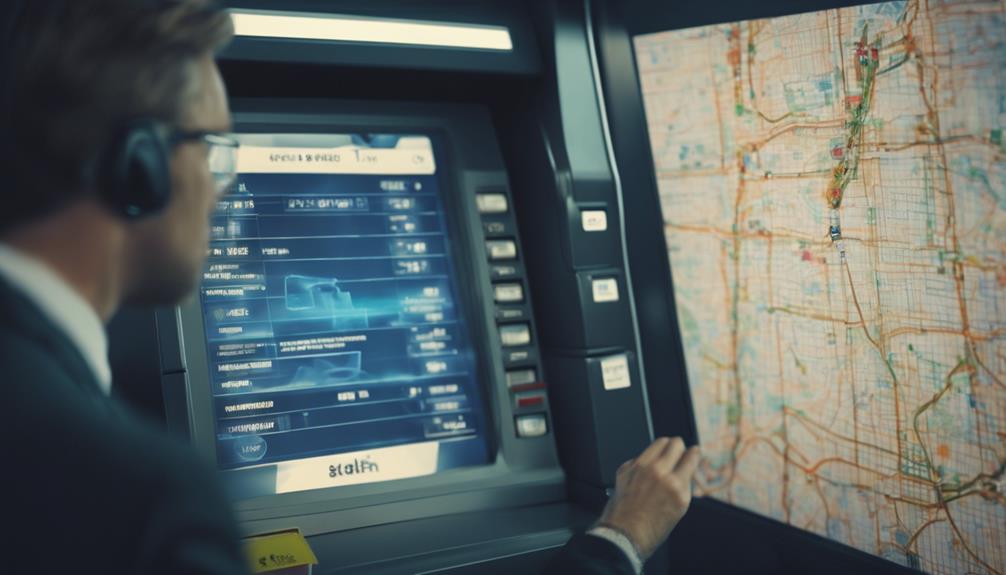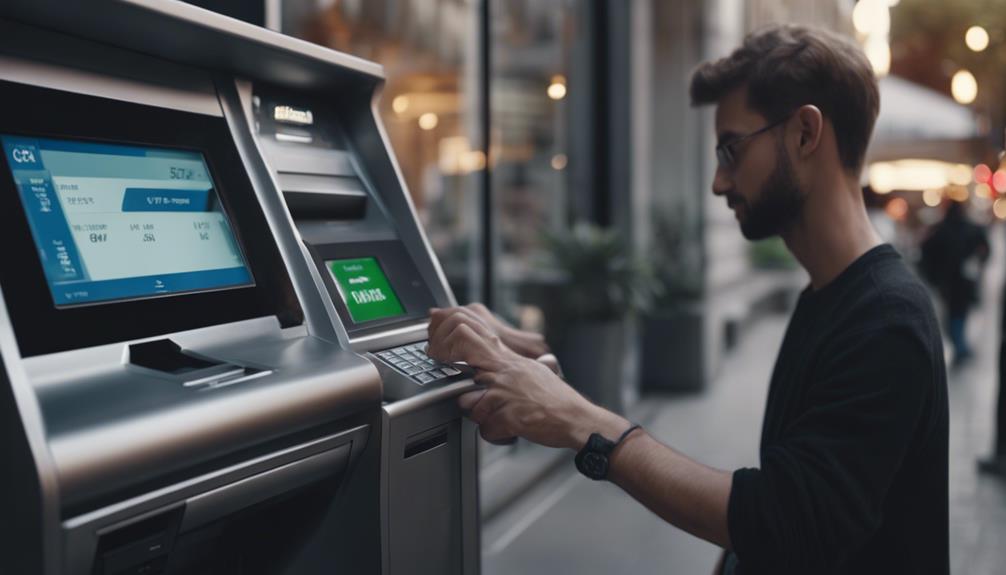Maximizing Profitability: A Comprehensive Guide to How To Start a Atm Business
Have you ever dreamed of starting your own ATM business? Well, get ready to turn that dream into a reality! Starting an ATM business is like planting seeds of potential in a market that’s ripe for growth.
But where do you begin? Don’t worry, I’ve got you covered. In this guide, I’ll walk you through the essential steps to set up your ATM venture. From market research to marketing strategies, we’ll cover it all.
So, are you ready to unlock the secrets of this lucrative industry and pave the way for financial success? Let’s dive in and discover the exciting world of ATM businesses!
Market Research Fundamentals

You need to learn market research if you want to learn how to start a Atm business because it is super important. It helps you figure out how much money you’ll need to get started and how much money you can make. It also helps you figure out who your customers are and how to reach them.
By doing research, you can find out what other businesses are offering and how you can stand out. And most importantly, research helps you find the best spot for your ATM. This is really important because where you put your ATM can make a big difference in how successful your business is.
Legal and Financial Setup
To set up your ATM business legally and financially, you need to establish a solid legal structure and secure suitable financing options. Register your business with the necessary authorities, ensure you have the required permits, and open a separate bank account for your business.
Consult with an insurance agent for proper coverage and set up a reliable payment processor to streamline transactions.
Establish Legal Structure
When starting an ATM business, it’s important to choose the right legal structure. This means deciding if your business will be a sole proprietorship, partnership, LLC, C Corporation, or S Corporation. Here are some steps to help you establish your business legally and financially:
- Register your business: You’ll need to file the necessary paperwork with the Secretary of State to make your ATM business official.
- Get Articles of Incorporation: This is an important document that formalizes your business entity. You can get it from the state.
- Open a business bank account: It’s important to keep your personal and business finances separate. Opening a dedicated business account will help with this.
- Make sure you’re in compliance: To operate your ATM business, you’ll need to obtain the necessary permits and make sure you’re following local regulations and zoning codes.
Secure Financing Options
If you’re looking to fund your ATM business, there are a few options you can consider. One option is to approach a bank for a loan. They can provide you with the necessary funds to cover your setup costs and operational expenses.
Another option is to use your personal savings to finance your business. This can be a good option if you have enough money set aside.
Alternatively, you can try crowdfunding, where people contribute money towards your business in exchange for rewards or equity. Whichever option you choose, it’s important to have a solid financial plan in place.
You’ll also need to obtain the necessary permits and licenses for your ATM business and set up a dedicated business bank account. Make sure you understand and follow financial regulations to stay compliant.
Lastly, don’t forget to get insurance coverage to protect your assets.
Selecting the Right ATM

Hey there! When it comes to choosing the right ATM for your business, there are a few things you should keep in mind.
First off, you want to make sure that the ATM you choose is EMV compliant. This means that it meets the highest standards for secure transactions.
Next, it’s important to select an ATM that’s ADA compliant. This ensures that all users, including those with disabilities, can access and use the machine easily.
Another key factor to consider is PCI compliance. This means that the ATM adheres to strict standards to protect cardholder data.
Installation and Operation
When setting up your ATM business, the crucial points of choosing ideal locations and maintaining ATM security can’t be overlooked.
By strategically placing your ATMs in high-traffic areas with good visibility, you can attract more customers and increase transactions.
Ensuring the security of your ATMs by proper installation and maintenance will safeguard your investment and maintain customer trust.
Choosing Ideal Locations
When it comes to placing your ATMs in the best spots, you’ll want to be strategic. Here are some things to consider:
- Look for busy areas: Find places like shopping centers, gas stations, and convenience stores where lots of people go. This way, you’ll have more potential customers.
- Make sure your ATMs are easy to find: It’s important that people can see your machines and get to them easily. That way, more people will use them, and you’ll make more money.
- Keep security in mind: Look for locations with good security features. This will help protect your machines and keep your customers’ transactions safe.
- Think about cash replenishment: Choose places that are easy to get to when it’s time to refill your ATMs with cash. This will help you keep things running smoothly.
Maintaining ATM Security
Hey there! When it comes to keeping your ATMs safe and secure, it’s super important to take some smart steps.
First off, make sure those machines are securely attached to prevent any sneaky theft or tampering.
You’ll also want to stay on top of regularly updating and maintaining the ATM software to fix any security holes.
Adding things like PIN pad shields and surveillance cameras can really help scare off any would-be criminals.
And don’t forget to do routine physical checks of the ATM for any signs of tampering or skimming devices.
It’s also a good idea to train your staff on security protocols so everyone knows how to keep things running smoothly and safely.
Effective Marketing Strategies

Hey there!
So, if you want to effectively market your ATM business, I’ve got some tips for you.
First off, you should create cool signs that catch people’s attention and let them know about any special deals or perks your ATM offers.
Next, consider doing some ads that target customers directly. This will help raise awareness about how convenient and accessible your ATM services are.
Another great idea is to send out mailers or emails to potential ATM users. This way, you can let them know about your locations and get them excited to come check it out.
Lastly, try teaming up with local businesses to promote each other. This will increase visibility and attract more customers to use your ATM services.
Give these strategies a try, and watch your business grow!
Overcoming Common Challenges
When starting your ATM business, you’ll face challenges like securing prime locations and managing cash flow effectively.
These hurdles can be addressed by conducting thorough market research and negotiating favorable agreements with location owners.
Securing Prime Locations
So, if you’re looking to secure some prime locations for your ATM business, I’ve got a few tips for you. First off, you want to make sure you offer some really attractive commission rates to the business owners. That’s a great way to convince them to let you set up your ATMs in their spots.
Now, sometimes space can be a bit tight, but don’t worry! There are wall-mounted or freestanding ATM models that can help you overcome those constraints. They’re pretty handy.
Another thing you’ll want to consider is the people who’ll be using your ATMs. Take a look at the income levels and foot traffic patterns in different areas to find the perfect spots for your target market.
And last but not least, data analytics can be a real game-changer. By using monitoring tools and analyzing the performance of your ATM locations, you can make really informed decisions about expanding your business.
Managing Cash Flow
Managing cash flow is an important aspect of running an ATM business. To ensure smooth operations, it’s crucial to have enough working capital allocated for each machine. Aim to set aside around $2000 per week per ATM to keep a healthy cash flow.
Avoid setting low margins that may not cover your operational costs or bring in sustainable profits. It’s also essential to have funds set aside for servicing all your ATMs and handling unexpected expenses.
Keep a close eye on your cash flow and address any issues promptly. By implementing sound financial planning strategies, you can manage your expenses efficiently, sustain profitability, and support the growth of your ATM business.
Take control of your cash flow to ensure the long-term success of your venture.
Maximizing Profitability

To maximize profitability in your ATM business, focus on selecting strategic locations and negotiating vendor contracts that offer competitive rates.
By strategically placing your ATMs in high-traffic areas and securing favorable terms with suppliers, you can increase transaction volume and revenue.
Stay proactive in reviewing and adjusting your business strategies to ensure continued success and profitability.
Selecting Strategic Locations
If you want to make the most money with your ATM business, it’s important to choose the right locations. Look for places where a lot of people walk by, like busy streets or shopping centers. These high-traffic areas will bring in more customers and increase the number of transactions.
Another good option is to put your ATMs in convenience stores. This way, you can attract regular customers who come in for snacks or other items. Gas stations are also a great choice because they’ve a steady flow of customers who need cash for their purchases.
Lastly, it’s a good idea to analyze demographic data to find the best locations based on consumer behavior. By following these tips, you can ensure the success of your ATM business.
Negotiating Vendor Contracts
When you’re choosing the best places to put your ATMs, it’s really important to negotiate contracts with the companies that provide the machines. This will help you make as much money as possible. To be successful, you need to talk to the vendors and agree on fair prices for the fees and commissions they charge.
It’s also important to have open and honest communication with them, so you can build a good relationship that will benefit both of you in the long run. You should also review your contracts regularly and make changes if you need to. This will help you make the most money, especially if the market changes.
Essential Maintenance Tips
Hey there! If you want to keep your ATM machine functioning smoothly and ensure a great user experience, regular maintenance is key. Here are some essential tips to help you maintain your ATM effectively:
- Give the card reader and keypad a good cleaning regularly. This will help prevent any issues and keep everything running smoothly.
- Keep an eye on the cash dispenser to prevent any jams or errors during transactions. Regular checks will help you catch any problems early on.
- Make sure to monitor the cash levels in the ATM and refill it promptly when needed. You don’t want your customers to run out of cash when they need it.
- Don’t forget to update the software and security features of your ATM. This will protect against potential fraud and security breaches, keeping your customers’ information safe.
- Lastly, it’s important to conduct regular maintenance inspections. This will help you identify and address any issues before they’ve a chance to impact the performance of your ATM.
Expanding Your ATM Network

To expand your ATM network successfully, you should focus on identifying high-traffic locations and negotiating favorable placement agreements.
By strategically placing ATMs in busy areas, you can maximize transaction volume and increase your passive income.
Taking these steps will help you grow your business and reach a broader customer base efficiently.
Identifying High-Traffic Locations
So, you want to expand your network of ATMs? Well, the first step is to find the best locations where lots of people are likely to use your machines. Let me give you some ideas on where to place them!
- Shopping Centers: These places have a ton of people coming in and out every day. So, it’s a great idea to put your ATMs there. People can conveniently withdraw cash while they’re out shopping.
- Urban Areas: Some neighborhoods don’t have many banks or ATMs nearby. By placing your machines in these areas, you can attract more customers who are in need of cash.
- Popular Restaurants: Think about it – when people go out to eat, they often need cash for tips or paying the bill. By putting ATMs near restaurants and bars, you can make it super easy for people to get the cash they need.
- Transportation Hubs: Train stations and airports are always bustling with travelers. Many of them need cash for various reasons, like taxis or snacks. So, having ATMs in these locations can really boost your network.
Negotiating Placement Agreements
So, now that you’ve identified some great spots for your ATMs in busy areas, it’s time to negotiate placement agreements to expand your network effectively. When you talk to business owners about placing your ATMs in their establishments, there are a few things to consider.
First, you want to discuss factors like how many people walk by the ATM, how many transactions it might get, and how visible it’s to potential customers. These factors will help you and the business owner come to an agreement on a fair commission rate.
Some business owners might be willing to let you place your ATM for free because they want to make it more convenient for their customers. That’s a win-win situation!
You can also consider a sliding scale commission structure, which means the commission rate can change based on how many transactions the ATM gets. This can give both you and the business owner some flexibility in the agreement.
It’s important to talk about things like who’ll be responsible for maintaining the ATM, managing the cash, and any rules about how the ATM can be used.
Conclusion
Congratulations on acquiring the necessary tools and knowledge to start your own ATM business! This exciting venture requires minimal investment and offers the potential for high returns, making it a great opportunity for financial success.
Take action now and turn your dream into reality. Start earning passive income today as a successful ATM entrepreneur. Good luck on your journey!
Have you considered how this business can transform your financial future? Share your thoughts and experiences with us below or explore more about this topic on our blog.







